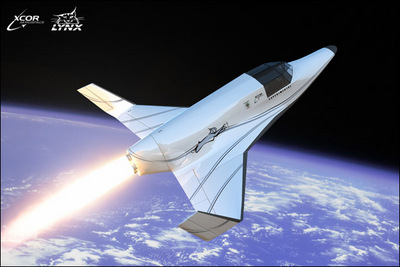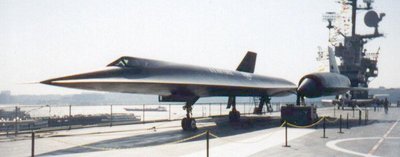The Royal Air Force marks its 90th birthday today. There will be a flypast over central London at 1pm, so if readers have a digital camera, keep it nearby.
|
|||||
|
Heathrow’s Terminal Five, the one which is fingerprinting passengers even if they take domestic flights, has got off to a glorious start. The British Airports Authority, now owned by Spain’s Ferrovial, is a joke. In an ideal universe, it would be broken up – as it should never have been privatised as a monopoly in the first place. If the wannabe Mayor of London, Boris Johnson, wants a campaign issue, this is it. Update: I should of course stress that BA, which operates out of the terminal, bears a heavy lump of the responsibility for this. Its share price is down today by more than 3%. At least BA feels the economic chill of this sort of mess, BAA does not. One commenter points out that hitches often happen at the start of a new venture, but that does really wash since one assumes – right? – that the baggage and check-in facilities at a new airport were beta-tested to make sure they work properly. One would like to think that this is standard procedure in any new operation. XCOR’s press conference will start in LA in a couple hours and I have just found that the embargo on the Lynx Spaceplane press release has been lifted. For those few lucky ones who happened to catch my earlier article and then wondered why it vanished, it was due to a communications SNAFU. The person who sent me the info forgot to state it was embargoed so I blogged it. An hour later I received a frantic phone call whilst I was watching a DVD and pulled it as soon as he explained the mistake. In any case, there is now a lot more information about the Lynx showing up. Rand Simberg, one of my business partners, will be there and no doubt live blogging it. Disclosures: I might add that I spent several months doing software support for the aerodynamics guy. 🙂  The Lynx will fly within two years with Astronaut Searfoss at the controls. Image: With thanks to XCOR. XCOR will be holding a press conference this Wednesday about the spaceship they are building. It will be their third manned rocket powered vehicle so this is no idle threat. This press event will be held Wednesday, March 26, at 10 a.m. in the Canon Room of the Beverly Hilton at 9876 Wilshire Boulevard in Beverly Hills, CA 90210. Lunch will be served afterwards. The speaker will be XCOR test pilot Rick Searfoss. Rick has also flown the Space Shuttle three times as pilot and commander. If you are a media person who would like to attend, I presume you should call XCOR as soon as possible, although the information passed to me did not give any details on this. According to a source associated with XCOR:
I must of course note that I have worked as a consultant to XCOR, which basically means I know from the inside how good they are at this! I would tell you more but I would have to shred you afterwards. So there I was, your typical history buff aviation enthusiast, when I overhear a discussion in a cafe that there is a movie out called Horton hears a who. “Oh fab!” thinks I, fully expecting said movie to feature the coolest Nazi jet fighter ever conceived (and if you know anything about conceptual late war German aviation, that is saying something). Maybe some contra-factual Luftwaffe 1946 scenario? Woo hoo! …Sadly it is about an elephant. A nice article in the Daily Telegraph on how to make flying a bit more fun, which admittedly is a tough proposition as the enthusiasm for “security theatre”, as some call it, makes for longer queues at airports. The term means security measures designed to give the impression of making us safer rather than actually doing so. I rather liked the article’s almost heartbreakingly simple suggestion: pack a set of ear mufflers. They don’t have to be big, but they can cut out the racket, such as the noise of a fractious baby child. I am going to get some. For years, I always dreaded the prospect of having to share part of the cabin with a set of screaming kids or for that matter, a chatty adult who did not get the hint that I’d rather read one of Lee Child’s Jack Reacher thrillers than hear my neighbour’s personal problems. Problem solved! I heard the very sad news earlier this evening. Arthur is a member of the Trinity: Asimov, Clarke and Heinlein, the greatest of the great Science Fiction writers. The first SF novel I ever read was “Red Sands Of Mars” when I was nine and by age fourteen I had read my way through every SF book in the Coraopolis Public Library and the Carnegie Library of Pittsburgh. Arthur may have passed, but he is an immortal, a name which will be honored on far stars long after even after those of the greatest world leaders of our era are lost and forgotten. Earlier today business partner Jim Bennett passed this SR-71 story along to me. Mach 3.5 at 80,000 MSL… It just makes me go all quivery inside.  Not a single SR-71 was scrapped: every last one has been given an honoured and well-cared for retirement. Photo: copyright Dale Amon, All Rights Reserved I do not normally like receiving emails selling me products, but I thought I would have to make an exception for this:
I look forward to the Nigerian version: “My name is Mr.Moses Odiaka. I work in the credit and accounts department of Union Bank of NigeriaPlc,Lagos, Nigeria. I write you in respect of a foreign customer with a Virgin Galactica ticket. His name is Engineer Manfred Becker. He was among those who died in a plane crash here in Nigeria during the reign of late General Sani Abacha. Since the demise of this our customer, Engineer Manfred Becker, who was an oil merchant/contractor, I have kept a close watch of the deposit records and accounts and since then nobody has come to claim the airmiles in this a/c as next of kin to the late Engineer. He had only 18.5mllion air miles in his a/c and the a/c is coded. It is only an insider that could produce the code or password of the deposit particulars. As it stands now,there is nobody in that position to produce the needed information other than my very self considering my position in the bank.” Somewhat over a week ago I did a posting here about maths. What use, I asked, is it? I always knew there were plenty of good answers, but the quantity and quality of what the Samizdata commentariat came up with amazed and delighted me, as it did a number of those same commenters. Someone even suggested we have other postings here about what use other educationally controversial things are, like poetry, Latin, and so on (I am thinking: media studies, which I definitely do not assume would have to be useless). At the end of that piece I mentioned that Michael Jennings and I were about to record a conversation on this subject. Its been up and listenable to at my Education Blog for a while now, so apologies for the delay in mentioning it here, but far better a week late than never. This is not the kind of thing that will be going out of date any time soon. Here is the link to it. I did most of the asking, and Michael did most of the answering, and it must be admitted that Michael is not what you would call a hundred per cent fluent speaker. It sounds like he suffers from the mild remnants of a childhood stutter, which means that he would not be the ideal choice to perform on Just A Minute, a BBC 4 radio show where your mission is to talk uninterrupted nonsense and where you get penalised for the slightest suggestion of hesitation or repetition. For, on the plus side, Michael does not do nonsense either, which is part of the reason why he still often hesitates. He wants to get things right. Basically, the man just knows so much, about so many things, which means that when he answers a question he is as likely as not choosing between four or five equally relevant facts that he might then serve up. You can see why the people in the City of London get so rich, if they have people like Michael keeping them informed about the world and its business. I strongly urge anyone who resents even the hint of a lack of verbal fluency to, as the Americans say and pardon my split infinitive, deal with it. I found my talk with Michael about maths and its uses absolutely fascinating. Word of mouth already tells me that others have liked listening to it also, and I know that many more will if they click on the above link. The delay in telling Samizdata readers about this recorded conversation enables me also to mention here another such conversation involving Michael Jennings that has been more recently immortalised by another of London’s libertarian recording angels (so to speak), Patrick Crozier. This time, the subject is aviation, landing slots at Heathrow, international aviation treaties, and the like. If you have any doubts about Michael’s credentials as an expert on this industry (which of course could never have got off the ground without the relentless application of mathematics), then do what Patrick Crozier suggests and have a(nother?) read of this Samizdata posting from way back, on this same subject. Sadly, there was a mix up with the first attempt to record all this (might Patrick perhaps benefit from a media studies course?). The first conversation got stopped in mid flight through a wrong button getting pressed, and a separate concluding recording was done. But here they both are, and they are both well worth listening to. Patrick’s brief bloggery about them is to be found at Transport Blog, here and here. By the way, Patrick Crozier and I seem to have very divergent ideas about what is the correct volume at which to record these things, so be ready to do some nob twiddling if you go from one to the other. Technical comments about which of us got it wrong (both I dare say) and by how much would be very welcome. More media studies. Getting back to what was said, there are many delightful moments in these discussions, especially in the maths one, which I would say, wouldn’t I? Nevertheless, my absolute favourite bit of all happens towards the end of the first of the two aviation conversations, a soundbite which Patrick also featured on the short trailer that he did for that. The dialogue goes like this:
There are times when hesitation is the most eloquent thing there is. Listen, and all is explained. |
|||||

All content on this website (including text, photographs, audio files, and any other original works), unless otherwise noted, is licensed under a Creative Commons License. |
|||||



